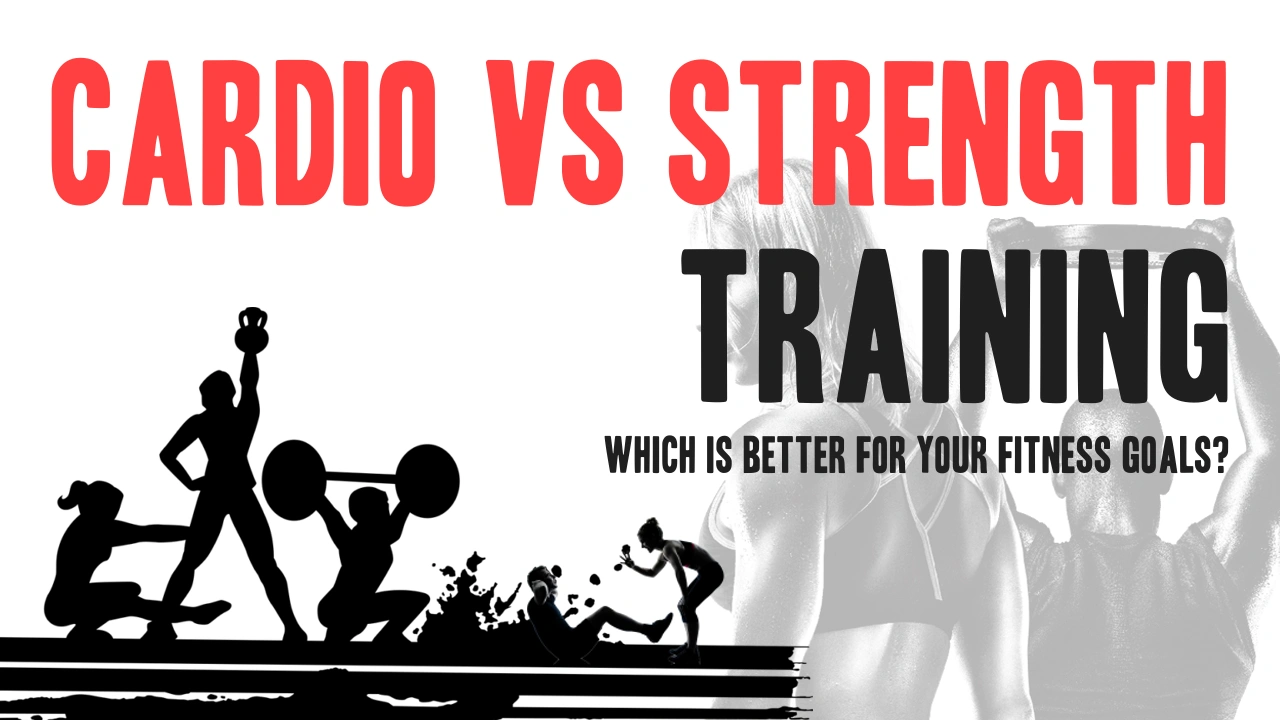Contents
Navigating the cardio vs. strength training dilemma? You’re not alone. Whether your aim is weight management, muscle building, cardiovascular improvement, or simply feeling fitter, both exercise types are essential for holistic health. However, the better choice often hinges on your individual objectives. We’ll break down cardio and strength training across key areas—fat loss, muscle development, metabolic function, and longevity—to empower you to make the right decision for your fitness journey.
What Is Cardio Training?
Cardio (short for cardiovascular) training refers to aerobic exercise—physical activity that increases heart rate and breathing for an extended period.
Examples include:
- Running or jogging
- Cycling
- Swimming
- Rowing
- Jump rope
- High-Intensity Interval Training (HIIT), when aerobically focused
Primary benefits:
- Improved heart and lung function
- Enhanced calorie burn
- Better insulin sensitivity and cholesterol levels
- Stress relief and mood enhancement
Cardio primarily strengthens the cardiovascular and respiratory systems, while also improving aerobic capacity (VO₂ max).
What Is Strength Training?
Strength training (also known as resistance or weight training) involves moving against external resistance—like dumbbells, barbells, resistance bands, or bodyweight—to increase muscle strength, size, and endurance.
Examples include:
- Squats, deadlifts, and lunges
- Push-ups and pull-ups
- Bench press and rows
- Resistance band training
- Cable machine exercises
Primary benefits:
- Increases muscle mass (hypertrophy)
- Enhances bone density and joint stability
- Improves metabolism and insulin sensitivity
- Prevents age-related muscle loss (sarcopenia)
Cardio vs Strength Training: A Side-by-Side Comparison
1. Fat Loss
- Cardio: Burns more calories per minute during the workout
- Strength Training: Builds muscle that increases resting metabolic rate (RMR), supporting long-term fat loss
Best Strategy: Combine both. Studies show strength + cardio training yields the most effective fat-loss results over time.
2. Muscle Growth
- Cardio: Does not significantly stimulate hypertrophy (except in beginners or very deconditioned individuals)
- Strength Training: The most effective method for muscle hypertrophy and neuromuscular adaptation
If building lean muscle is your priority, strength training should be your foundation.
3. Cardiovascular Health
- Cardio: Directly improves VO₂ max, blood pressure, resting heart rate, and cholesterol
- Strength Training: Also improves cardiovascular markers, though less dramatically than cardio
Both types of exercise improve heart health, but cardio is more efficient for aerobic conditioning.
4. Blood Sugar and Metabolic Health
- Cardio: Helps reduce blood glucose and insulin resistance
- Strength Training: Improves muscle insulin sensitivity and glucose uptake, especially important in managing prediabetes or type 2 diabetes
A combination is optimal for metabolic health.
5. Longevity and Healthspan
- Cardio: Associated with a lower risk of all-cause mortality
- Strength Training: Associated with lower cancer mortality, better functional aging, and mobility
A 2022 meta-analysis in the British Journal of Sports Medicine found that combining cardio and strength training led to the greatest reduction in mortality risk.
Should You Do Cardio or Strength Training First?
It depends on your primary goal:
- Prioritize strength training first if your goal is building muscle or strength.
- Start with cardio if you’re training for endurance or aerobic performance.
- For general fitness or fat loss, either sequence is fine—as long as you do both consistently.
How to Combine Cardio and Strength Training
Weekly Structure Example:
- Monday – Strength training (upper body)
- Tuesday – Moderate-intensity cardio (30–45 mins)
- Wednesday – Strength training (lower body)
- Thursday – Light cardio or rest
- Friday – Full-body strength + HIIT finisher
- Saturday – Active recovery (walk, cycle, yoga)
- Sunday – Rest
Tips:
- Avoid high-volume cardio before heavy lifting sessions
- If training both on the same day, separate by several hours or train strength first
- Use cardio days for recovery or energy system development, not punishment
Conclusion
So, which is better—cardio or strength training? The answer depends on your individual goals, but in reality, they work best together.
- For fat loss: Prioritize strength training and supplement with cardio
- For muscle gain: Focus on resistance training with moderate cardio for recovery
- For heart health and endurance: Cardio is essential, but strength training offers unique protective benefits
- For overall longevity: Research shows the combination of both leads to the best long-term outcomes
Instead of choosing one over the other, build a balanced routine that includes both cardio and strength to enhance performance, health, and longevity.
References
- Steele J, Fisher J, Skivington M. The role of resistance training in reducing risk of chronic disease. Br J Sports Med. 2022;56(14):786–794.
- Willis LH, Slentz CA, Bateman LA, et al. Effects of aerobic and/or resistance training on body mass and fat mass in overweight or obese adults. J Appl Physiol. 2012;113(12):1831–1837.
- Garber CE, et al. Quantity and quality of exercise for developing and maintaining cardiorespiratory, musculoskeletal, and neuromotor fitness in apparently healthy adults. Med Sci Sports Exerc. 2011;43(7):1334–1359.



